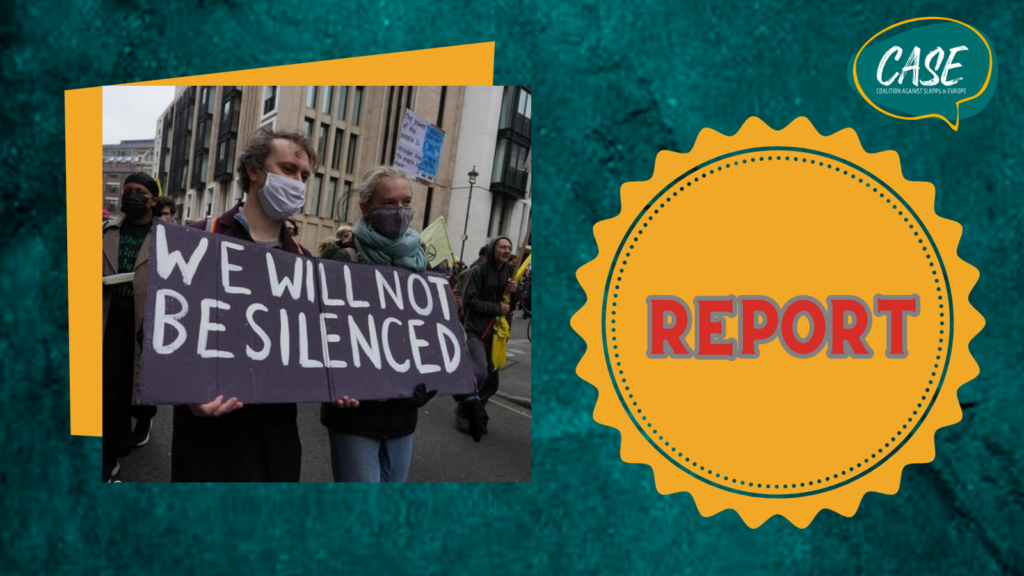How SLAPPs increasingly threaten democracy in Europe – new CASE report

As SLAPPs continue to mushroom across Europe, it’s time for abusive litigation and legal threats targeting journalists and activists – who expose and report on abuses of power – to be recognised as one the most pressing challenges for the universal right to speak and right to know.
Since 2019 CASE has worked with Amsterdam Law Clinics to catalogue and analyse SLAPP cases across Europe. In March 2022, the CASE published research findings based on the analysis of over 500 SLAPP cases identified in 29 European countries – the first such broad and thorough report examining the scale and impact of abusive litigation in Europe.
As CASE continues to map SLAPP cases on a rolling basis, the 2023 report provides the most recent overview of the data we collect. The updated analysis comprises 200+ abusive lawsuits filed after the first reporting period and a broader regional scope: this report reviews the situation in 35 countries, including Georgia and Greece that see a particularly alarming number of lawsuits identified as SLAPPs.
Key research findings
- Year after year, SLAPPs are increasingly a worrying threat to democracy across Europe – CASE’s database has increased from 570 cases in 2022 to over 820 cases in 2023.
- Most lawsuits are based on national defamation laws or similar provisions on insult or honour.
- The median value of damages claimed was €15,150.
- The most likely targets of a SLAPP are journalists, media outlets, editors, activists and NGOs.
- Abusive legal actions are most commonly launched against individuals, which shows how critical it is for a support network to be available.
- The most common SLAPP litigants are those in positions of power, namely, businesses and politicians.
- A notable number of SLAPP lawsuits were mapped in Malta, France, Croatia, Greece, the United Kingdom, Turkey, and Georgia.
- SLAPPs mostly target actions or publications on corruption, government, business and environmental issues.
Though the data illustrates the nature of SLAPPs in Europe and identifies the conditions that commonly give rise to SLAPPs, it does not map the full scale of the problem for a number of reasons, including the likelihood of unidentified SLAPPs. Nevertheless, this research report serves as a window into the gravity of the SLAPP situation and as a stimulus for debate about the vital need for robust anti-SLAPP legislation.
